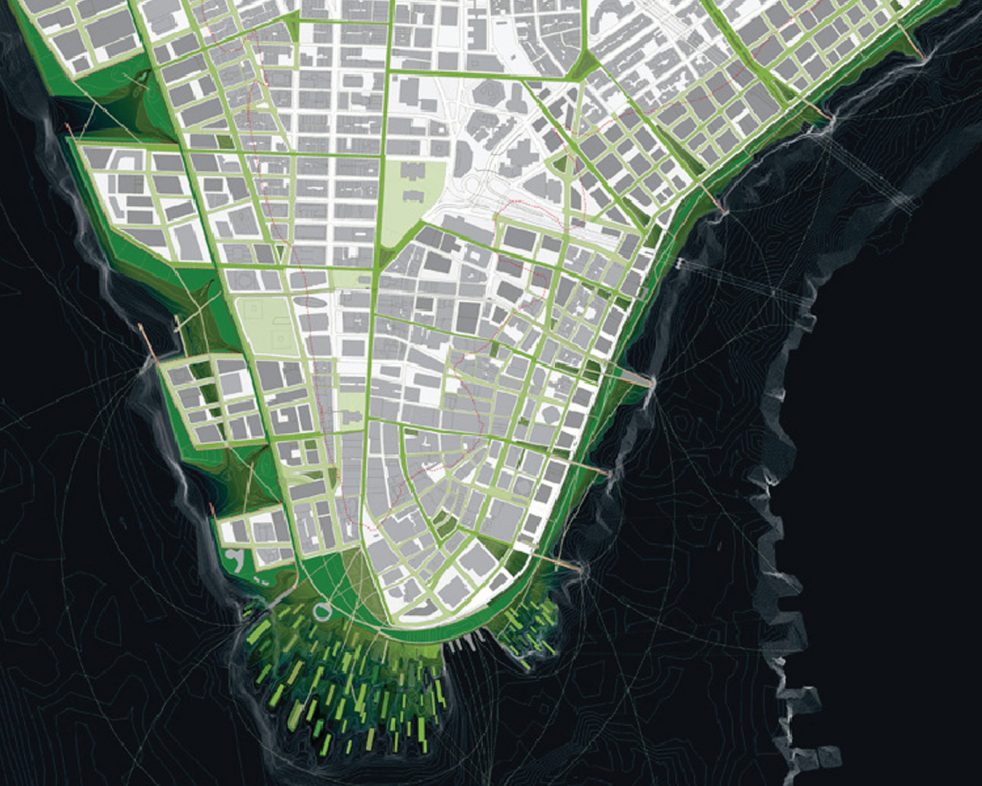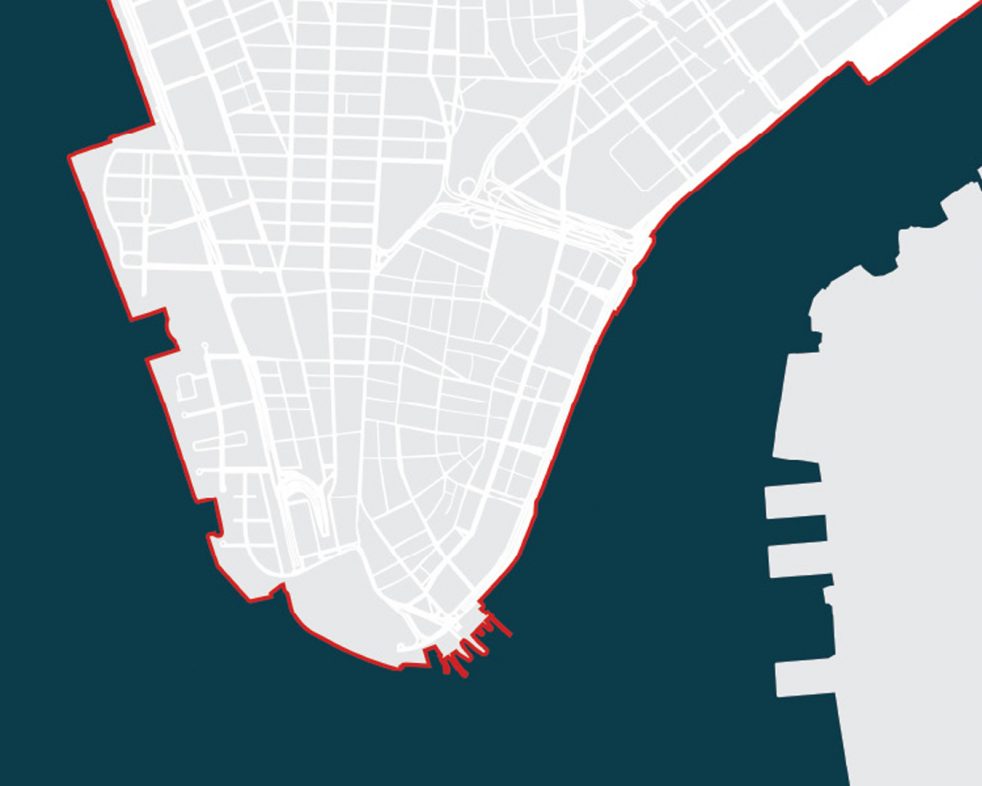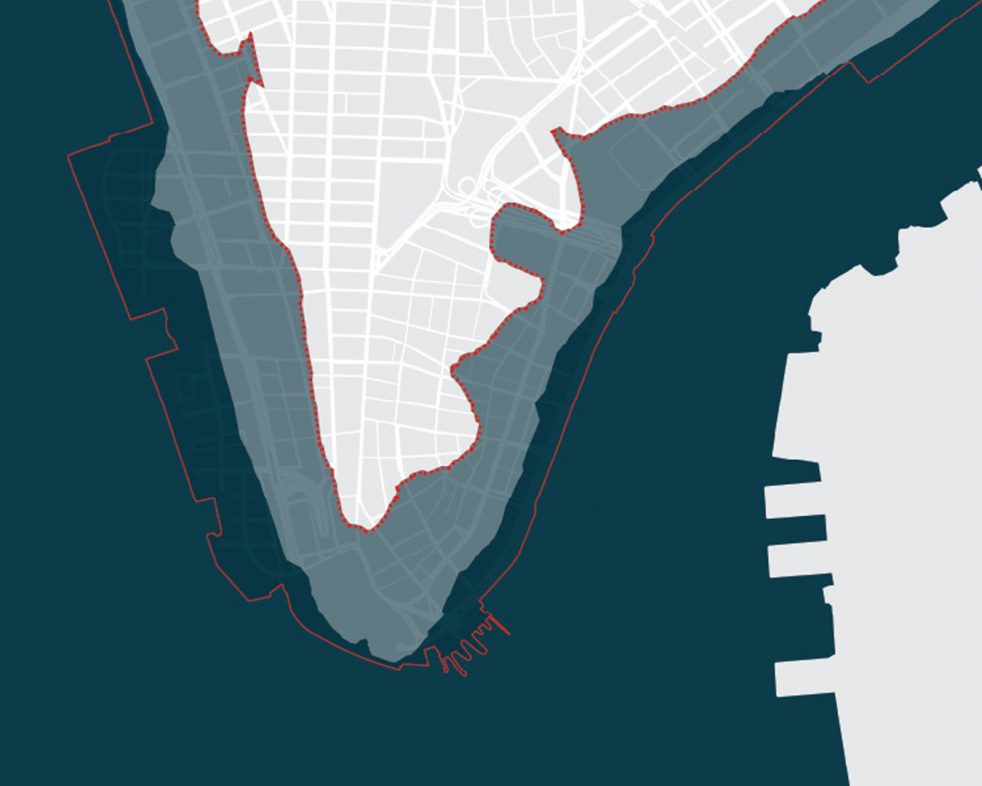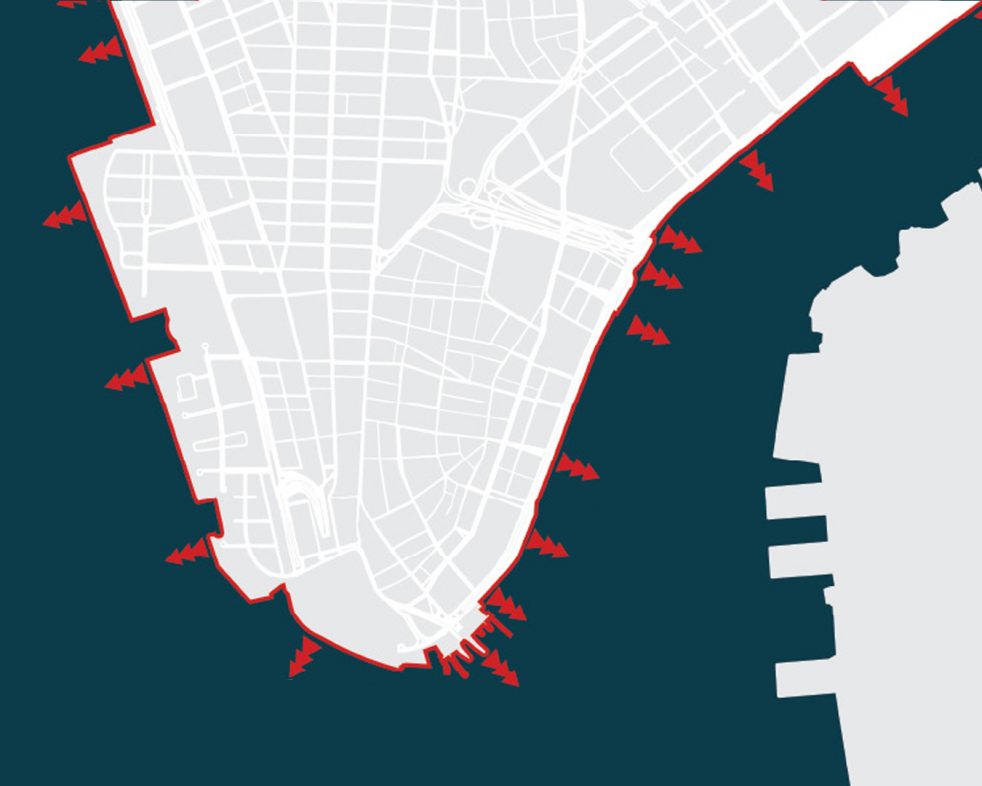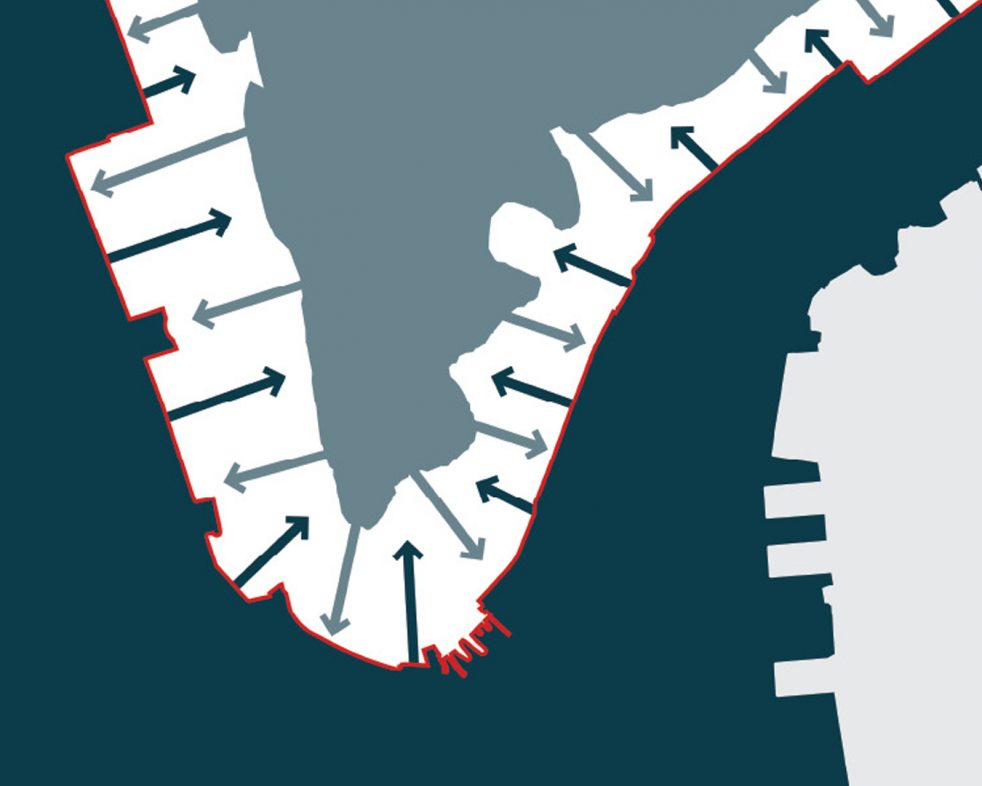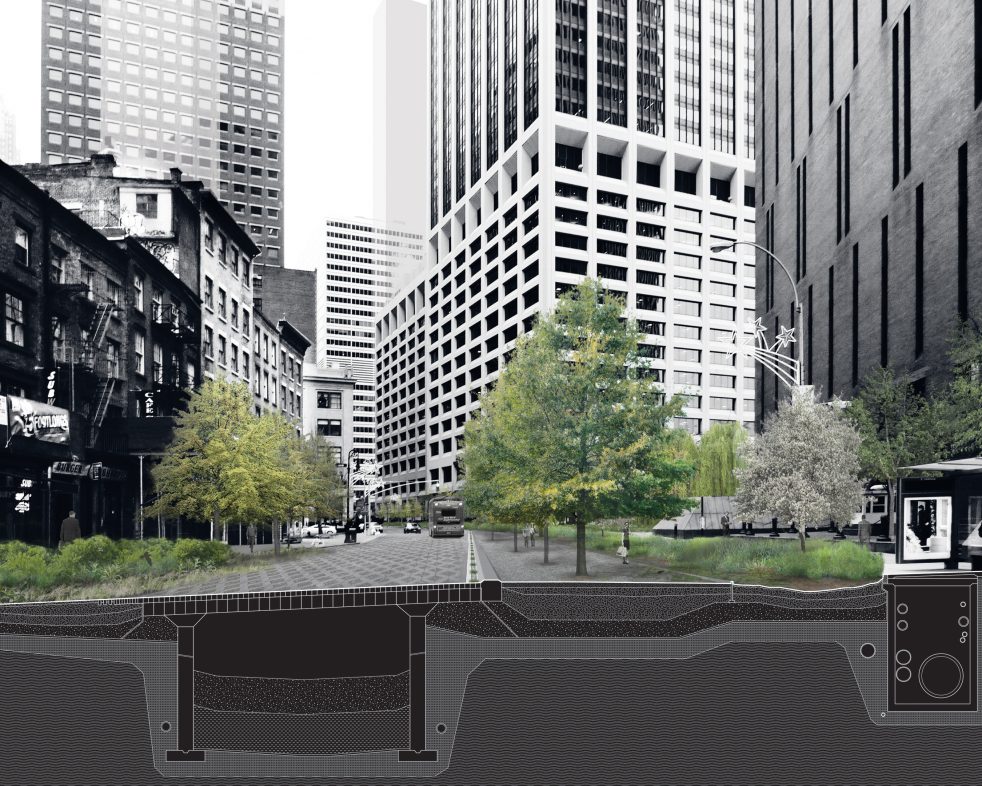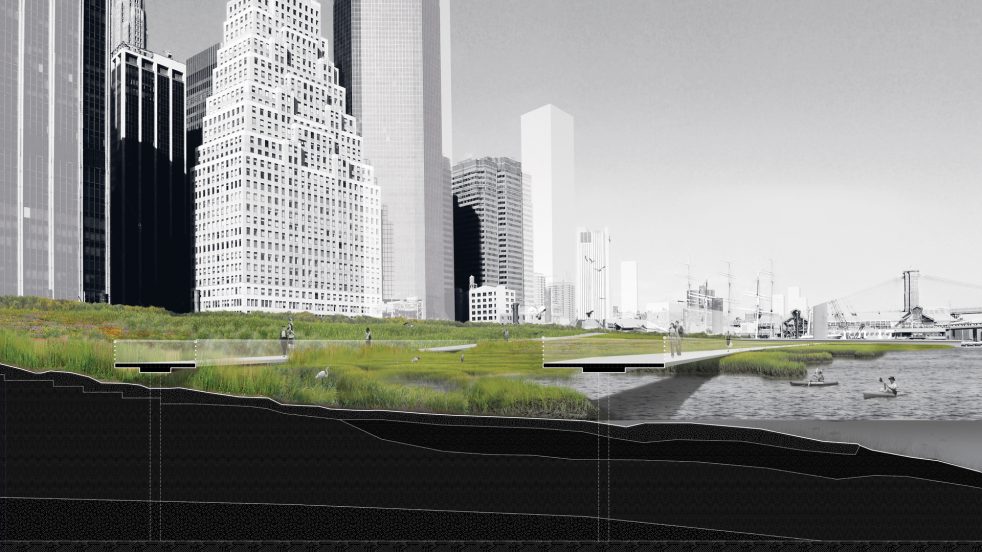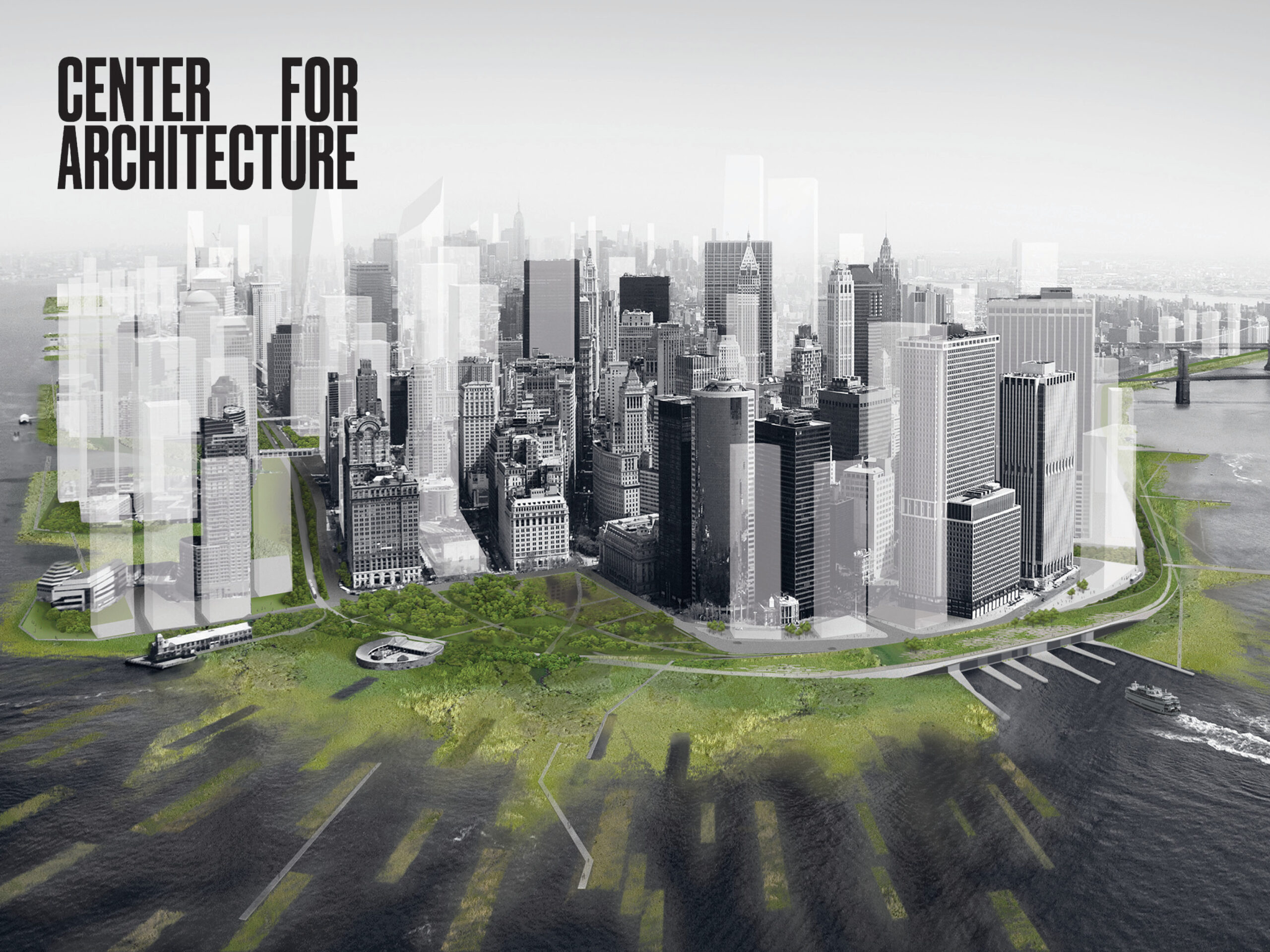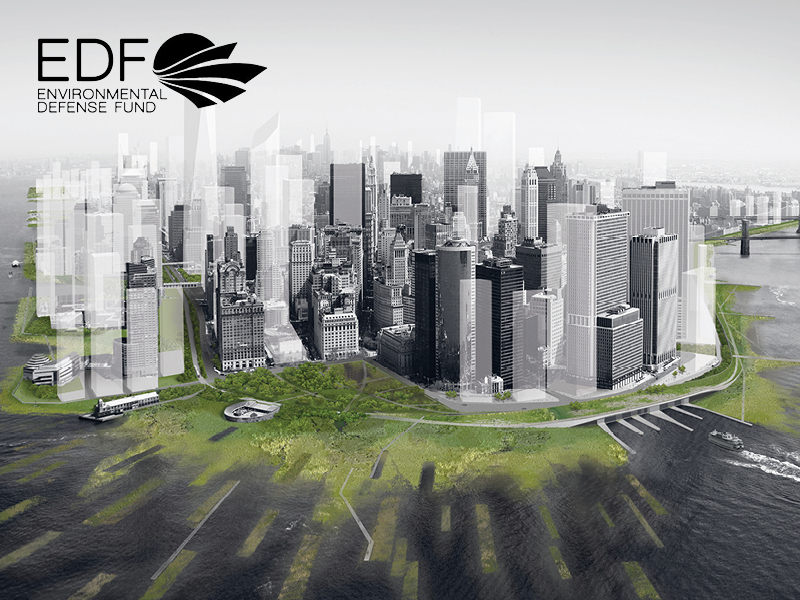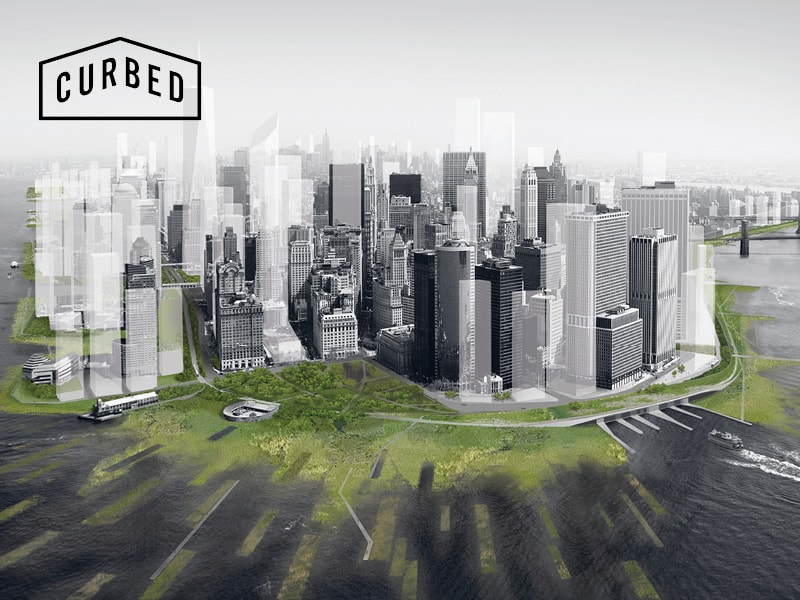Rising Currents: A New Urban Ground
As sea levels and storm surges rise, A New Urban Ground unites ecology and infrastructure to preserve and enhance life in Manhattan.
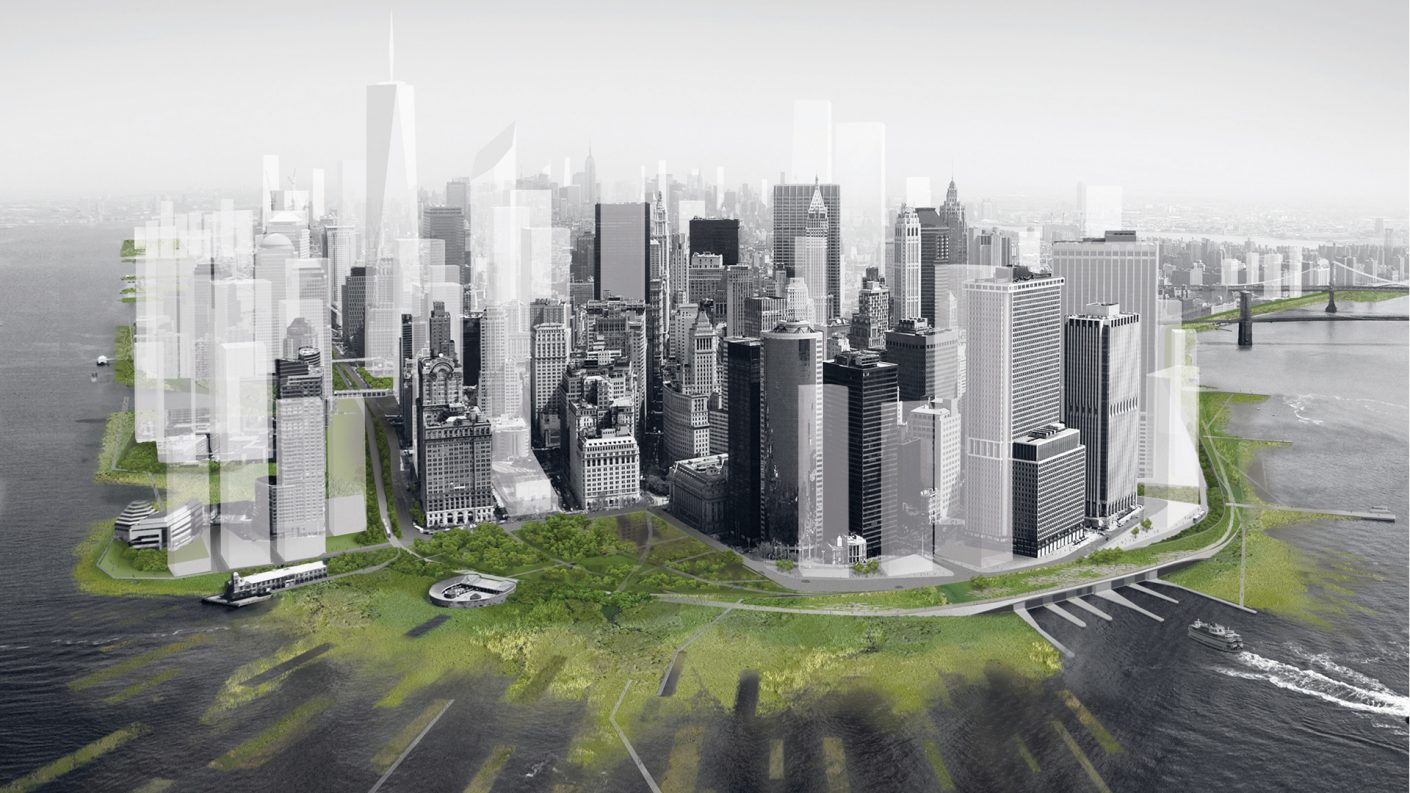
Low-lying and densely inhabited, Lower Manhattan sits in the path of any storm surge. After a two-year investigation of New York’s Palisade Bay—funded by the AIA’s 2007 Latrobe Prize—we were invited by the Museum of Modern Art to address this challenge with a contribution to their 2010 exhibition “Rising Currents: Projects for New York’s Waterfront.” The exhibition presented the work of five design teams who each reinvented sites throughout New York City. Our two-part proposal with landscape firm DLANDstudio creates a new paradigm for ecology within the city that not only protects Lower Manhattan from rising waters but also enriches day-to-day life.
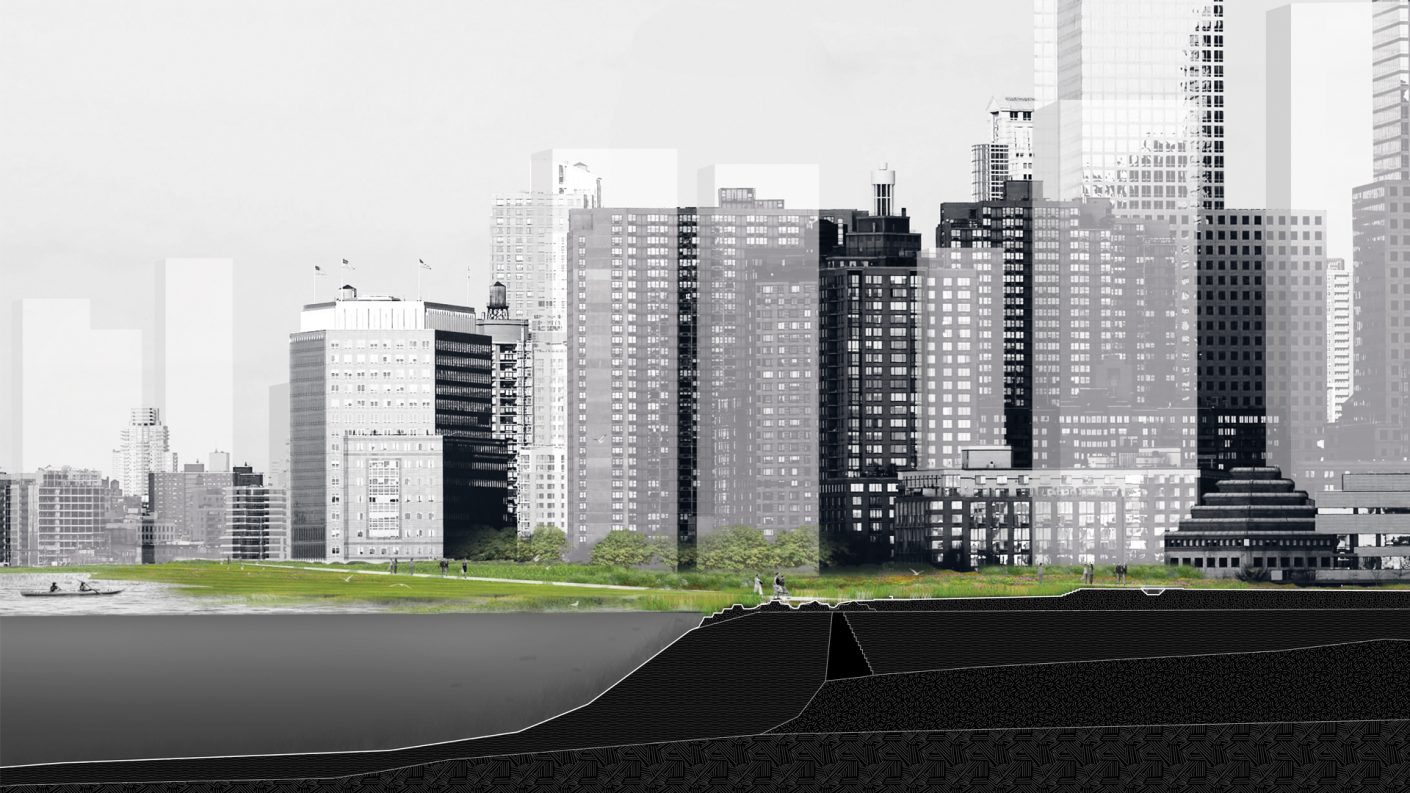
The proposal consists of two basic components that form an interconnected system: porous green streets and a graduated edge. Porous green streets create a network of absorptive surfaces for excess water and provide much-needed park space in a famously dense district. On the edge of the island, three interrelated high-performance systems block higher sea levels and mitigate storm surges: a productive park network, freshwater wetlands, and tidal salt marshes. Together, these interventions build upon existing systems to create a new ecological infrastructure to support our city.
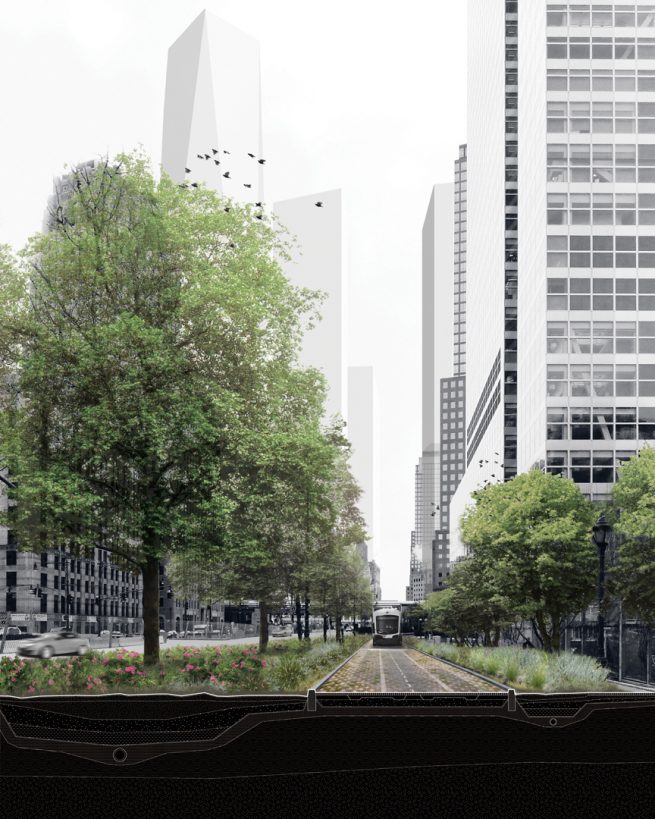
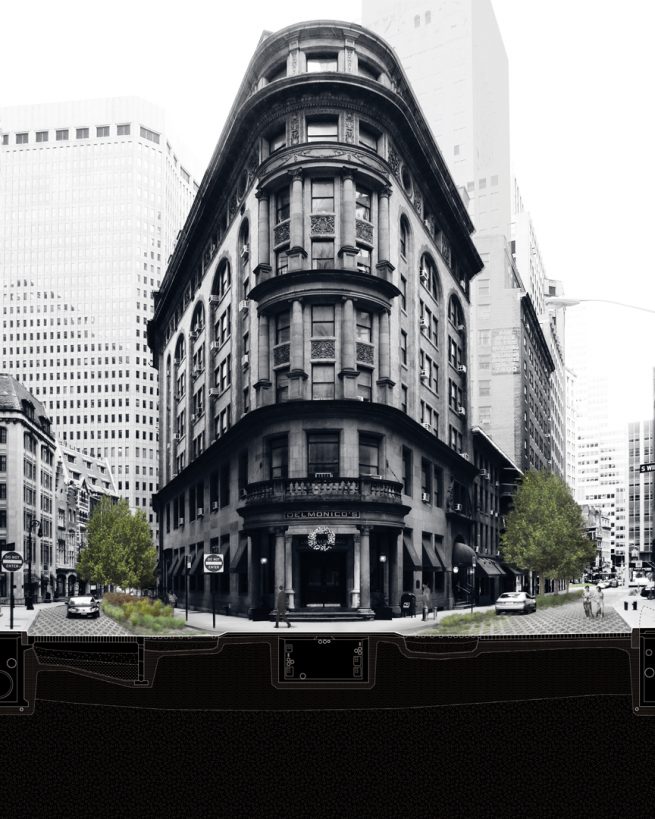
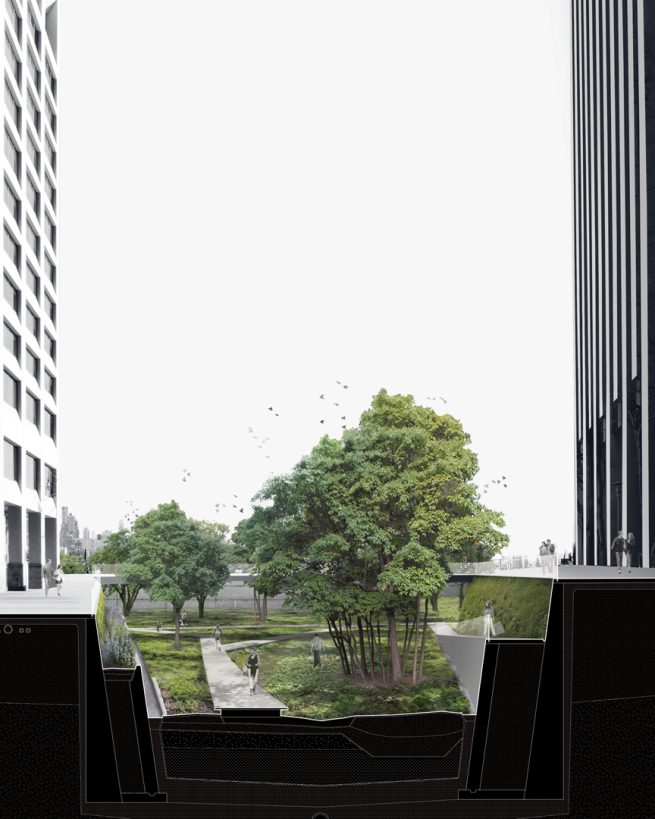
Read more about the research that informed “Rising Currents” in Stephen Cassell and Adam Yarinsky’s article for Places Journal.
